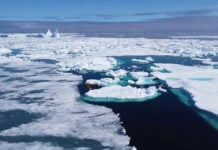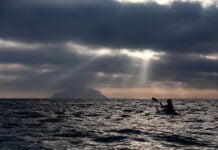The Finnish Sauna Society, a 3,500-member cultural association created in 1937 to celebrate the steam bath, says loyly is the spirit of the sauna. It’s the humid, steamy heat that rises from moistened sauna stones. In our effort to recreate a true sauna experience on the North Shore of Lake Superior, my paddling buddy Dave and I are looking for maximum loyly.
We put forth our best effort to capture the essence of the sauna at Swede Island. I do fine until we douse the stones with water for the third time. Seventy degrees Celsius of loyly sears my eyeballs, tightens my lungs and leaves me woozy. I feel my heart thumping in my temples.
“Run to the lake?” I gasp. It’s not so much a question as it is a plea. I’m not a Finn, but neither is my paddling buddy Dave. He’s out the door before me and I watch his naked body hurdle our two kayaks with Olympic grace. Soon we’re yelping in ice-cold, Lake Superior-in-May water.
But the torture is addictive. Shortly—it may have something to do with the two-degree lake water—we’re back in the sauna, hooked on loyly like junkies on crystal meth.
“According to Finnish lore,” I tell Dave, “if a sauna, liquor and tobacco don’t help, your condition is fatal.”
“I’d take the first two and trade the smokes for a couple of Scandinavian supermodels,” says Dave. We douse the rocks again and again, and run naked and screaming to the lake another couple times before calling it a night.
When Dave and I pulled into camp at Lake Superior’s Swede Island, we were incredulous with what we’d found. Here we would enjoy our second sauna in four days, and trade our damp tent for the warm, dry confines of a cabin.
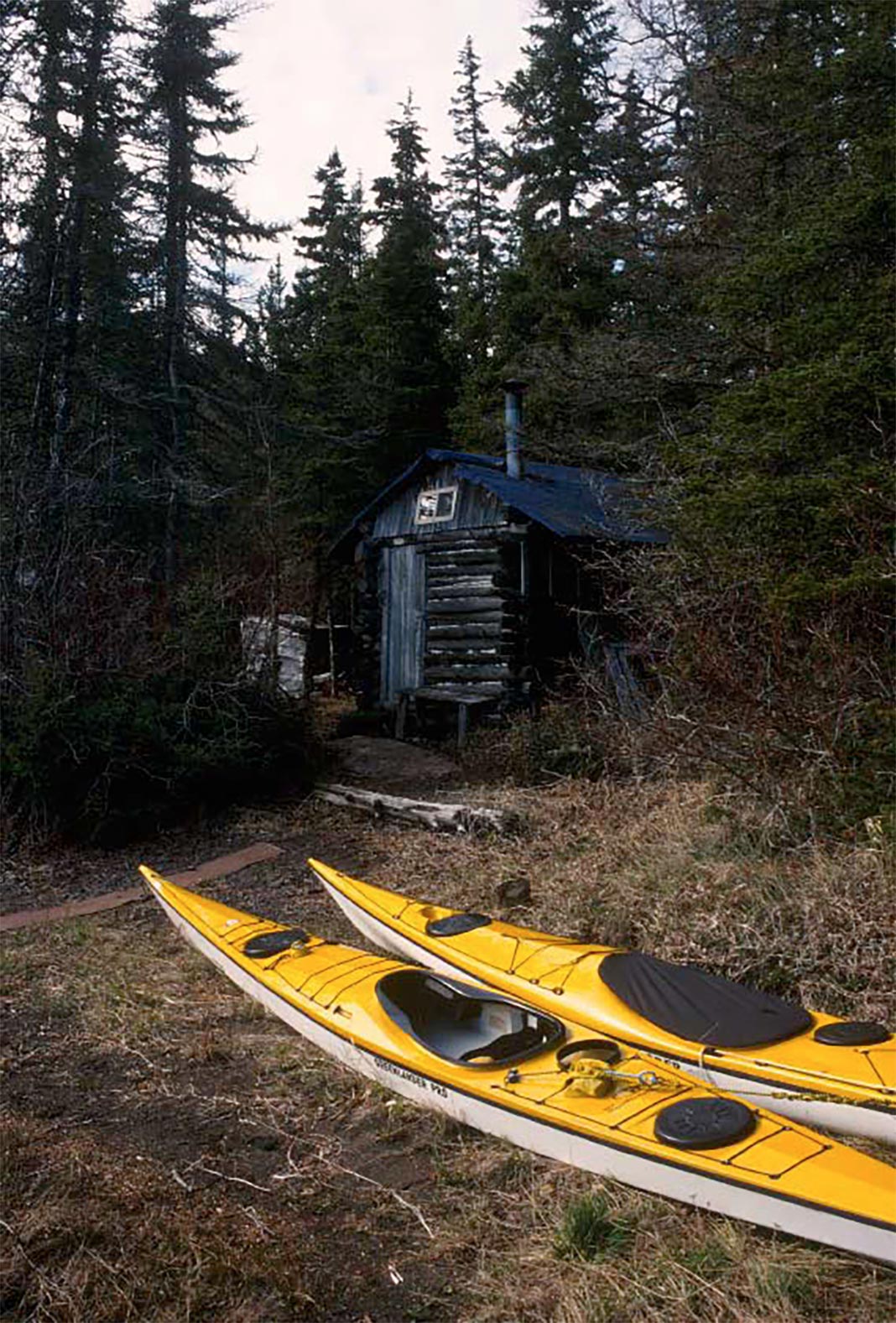
There are more people of Finnish descent living around northwestern Lake Superior than anywhere outside of Finland, the self-proclaimed “nation of the sauna.” In Finland, there is one sauna for every three people. As Finns immigrated to northwestern Ontario, so did their national bath. Community bathhouses like Thunder Bay’s Kangas Sauna still draw standing room-only crowds most every day of the week. And on Superior’s North Shore islands, at least half a dozen first-come, first-served saunas can be found tucked behind the shoreline greenery like Swede Island’s, which is a tar- and cotton-chinked log classic with a cylinder-shaped stove, cracked window, rickety door and slivery bench.
Between Rossport and Thunder Bay, Ontario, the North Shore of Lake Superior juts out in a 150-km-long series of sizeable islands, massive peninsulas and progressively smaller offshore islets. Simpson and St. Ignace Island lead to the boot-shaped Black Bay Peninsula and the Sibley Peninsula, which takes the form of an 8-km-long, 300-m-tall sleeping giant. In between, there are hundreds of small- to medium-sized islands—similar to Georgian Bay except the crossings tend to be longer, the water icy cold all summer long, and the coastline far less forgiving. For the most part, the area is too isolated and rugged for most pleasure boaters and cottagers; derelict fishing camps and stalwart lighthouses replace cigarette boats and multimillion-dollar summer homes.
There are more people of Finnish descent living around northwestern Lake Superior than anywhere outside of Finland
It wasn’t necessarily wilderness sea kayaking but the siren call of the secret saunas scattered along the way that lured Dave and me into a mid-May trip. We began at the village of Rossport and finished at Silver Islet, a tiny cottage community at the tip of the Sibley Peninsula. We took a week to cover the 130-km-long stretch.
We spent our first night tenting in the rain near Battle Island, and given the weather and our predicament—Dave had somehow managed to turn most of his clothes into sponges—we were dead set on making it to CPR Slip for our second night. Located on the southwestern side of St. Ignace Island, it would be the first stop on our sauna tour. Getting there meant 45 km of cold, wet misery. Had we taken the time to admire the shore, we would’ve noticed bizarre honeycomb-shaped pillars of basalt on Simpson Island’s west side, and we could’ve camped on a number of cobblestone beaches along the way.
We arrived at CPR Slip somewhere between slate-grey skies and pitch blackness—on that day there was no sunset. The Canadian Pacific Railroad shaped a small harbour and built a retreat for its executives here in the 1930s. After it was abandoned, area pleasure boaters (and no doubt Finns) resurrected the four-bed cabin and built the best sauna on the North Shore. It’s well-sealed and features a concrete floor and two-tier seating; and it’s within a 15-m run from a prime deep-water jumping place.
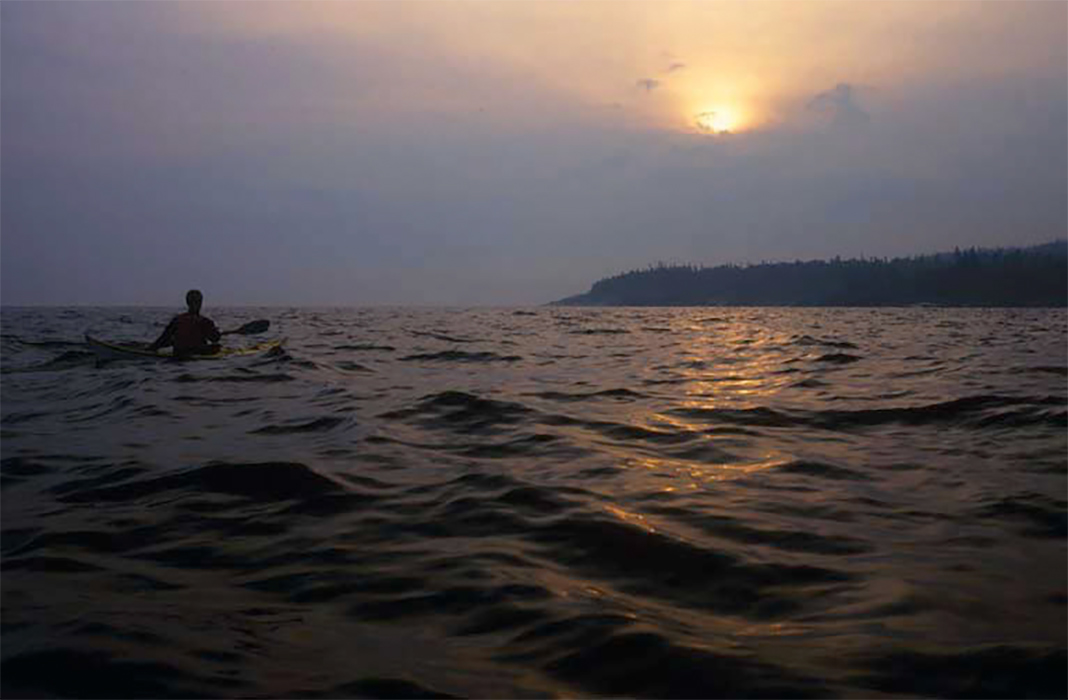
At CPR Slip, as with the other saunas along the way, good etiquette says you replace any wood that you use and leave the place cleaner than you found it. Beyond CPR Slip, good campsites are a dime a dozen on Fluor Island’s southeast shore. We camped out on our third night before hopscotching our way between outer islands, paddling by compass in the fog across open water before tracing the narrow, river-like channels between sphagnum-draped Borden and Spain islands. On the latter, we found but bypassed a sauna called Bahia Espana—it’s camouflaged and hard to spot in the brushy shore.
Then we pretty near circumnavigated Swede Island before beaching our boats in a shallow bay and stumbling upon a log steam bath and smallish cabin.
For traditionalists, the process of having a sauna isn’t hasty. First off, pronounce it “sow-na,” not “saw-na” as it has been corrupted by North Americans. Gather the a driest wood you can find and heat it slowly. Then cut birch whisks that are used in the sauna to slap one’s body to increase blood circulation to the skin. These are best harvested in the spring when the leaves stick to the branches more tenaciously and fill the sauna with a pungent, vinegary smell.
Once the sauna is hot—the Finnish Sauna Society recommends 60 to 80 degrees Celsius—strip down and get in. Your birthday suit is always best. Alternate hot sessions with a cold splashes of air and water. Don’t forget loyly. Afterwards, you should feel pleasantly subdued, cleaner than you’ve ever felt before, and you might—if you suffer from an addictive-personality like Dave and me—be hooked on the spirit of the sauna forever.
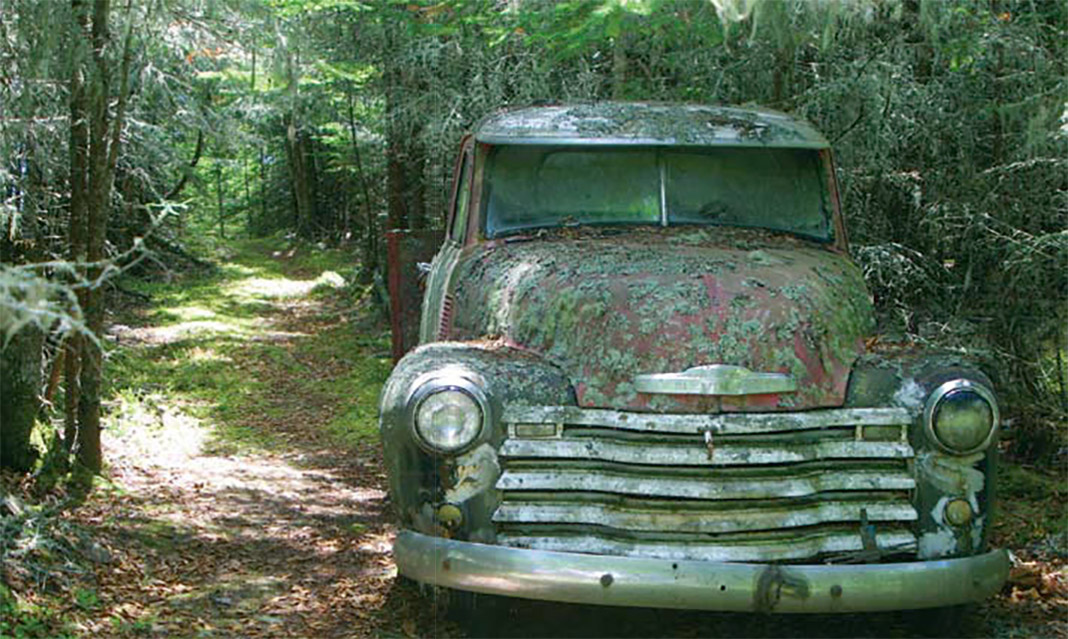
On our last night, we gazed across 8 km of Lake Superior between our campsite on Porphyry Island and the Sibley Peninsula—the longest stretch of open water en route. The crossing looked intimidating: Fog swirled over the water’s surface and blended into a blood-red sky, just above the distant yet distinct form of Sibley’s Sleeping Giant.
We’d grown accustomed to the amenities of Swede Island—we’d spent two nights there—and we wondered where we might’ve found other hidden saunas. No doubt there were once more—at the abandoned fish camp on Bowman Island and the active fish camp on Magnet Island, and lurking forgotten behind the few ramshackle cabins we saw along the way; and Ojibwa people did their own kind of sauna on the cobblestones of Wilson Island’s Sweat Lodge Point.
We longed for the smell of hot birch leaves, the steamy head rush of loyly, and to a lesser extent, the euphoric feeling of launching one’s hot, sweaty self into near-freezing water. For a minute, we imagined the mist swirling in the distance was loyly radiating from the biggest steam bath in the world. But returning to our senses, we realized that it was only fog rising from the largest, coldest freshwater lake in the world. On this trip, we would have no more saunas. Darkness fell, and we dragged our feet to the tent.
Trip planner
Outfitters and guided trips
Naturally Superior Adventures
Wawa, ON
1-800-203-9092Superior Outfitters
Rossport, ON
807-824-3314Resources
Guide To Sea Kayaking On Lakes Superior & Michigan
Superior: Under The Shadow of The Gods
Charts
2301, 2302, 2303, 2312
Topo maps
52 A/7, 52 A/7, 52 A/9, 42 D/12, 42 D/13
Logistics
Allow one week to 10 days to complete the 130 km between Rossport and Silver Islet. In the summer, paddle from west to east to take advantage of the prevailing westerlies. You can leave vehicles at Silver Islet’s public boat launch or near Rossport Community Centre and run a shuttle—2.5 hours one way—or arrange transport through Superior Outfitters.
Look for good campsites and saunas at McKay’s Harbour on Simpson Island, CPR Slip on St. Ignace Island, Fluor Island (south shore), Borden Island, Spain Island, Swede Island, Number 10 Island and Porphyry Island.
Beware of magnetic disturbances of up to 20 degrees around Magnet Point at the tip of the Black Bay Peninsula.
Difficulty
Lots of open water and the potential for southerly winds and large seas, not to mention a shortage of easy landings in rough water, make this route one of the most challenging on the Great Lakes. There are several crossings longer than 5 km and the longest, between Porphyry Island and Sibley Peninsula, is eight.
The North Shore is remote and isolated. Early or late in the season—sometimes even in mid-summer—you could go days without seeing another person. Come equipped with emergency rations and a good VHF marine radio.
When to go
Lake is Superior is calmest in May, June, July and early August; expect to be windbound one day per week during this time. You’ll experience more fog early in the paddling season and less predictable weather from mid-August on.
Water temperatures hover near freezing until July and often remaining uncomfortably cold throughout the summer. Drysuits or wetsuits are highly recommended.
Access
Silver Islet is about a 1.5-hour drive northeast of Thunder Bay, Ontario via highways 17 and 587; Rossport is located on highway 17, about 2.5 hours east of Thunder Bay. There are no intermediate access points.
This article was first published in Adventure Kayak‘s Summer 2006 issue. Subscribe to Paddling Magazine’s print and digital editions here , or browse the archives here.
Conor Mihell is a kayak instructor and guide who is living in Wawa until his Finnish citizenship comes through.
Not the kind of mist we’re looking for. | Photo: Rick Mathews





